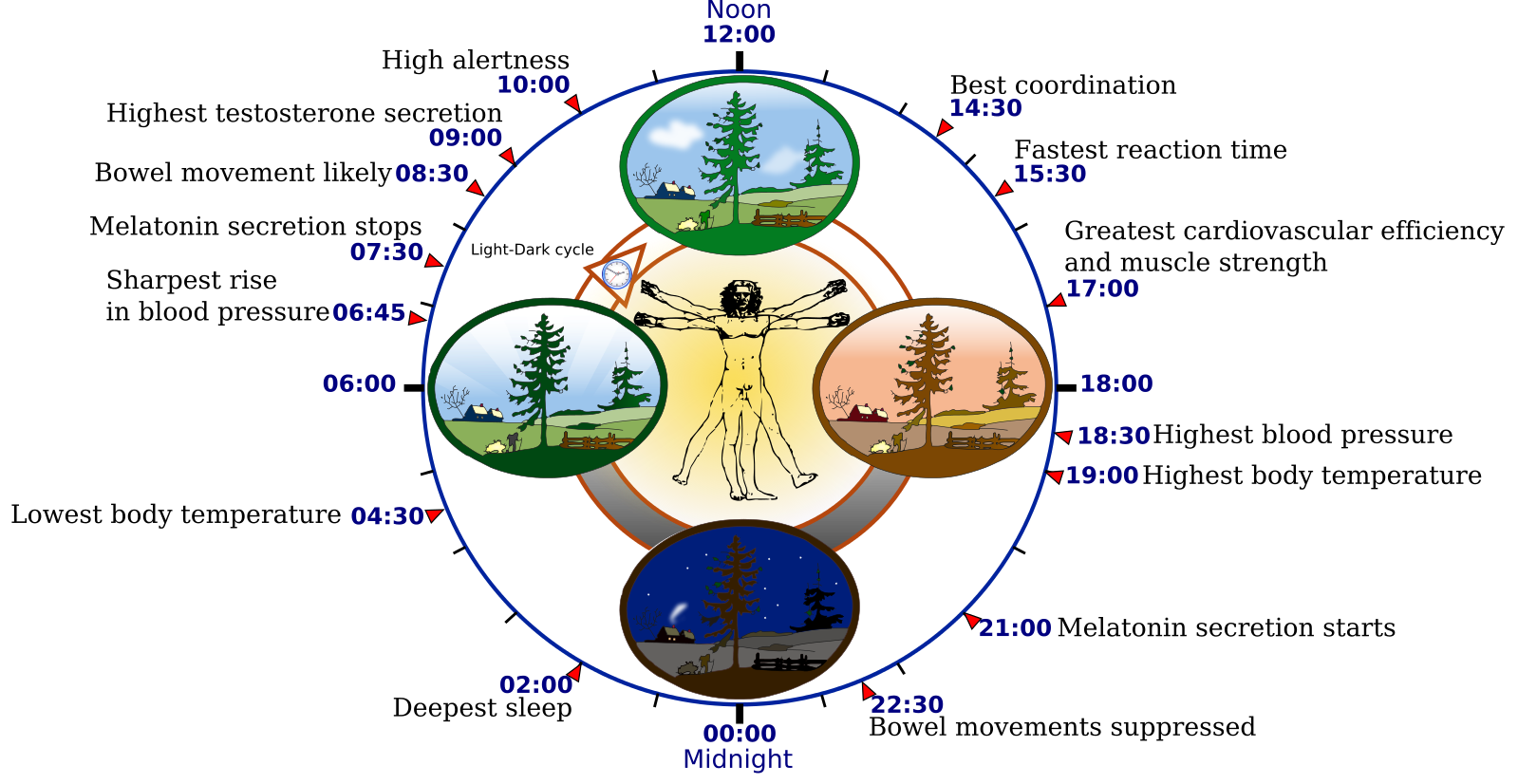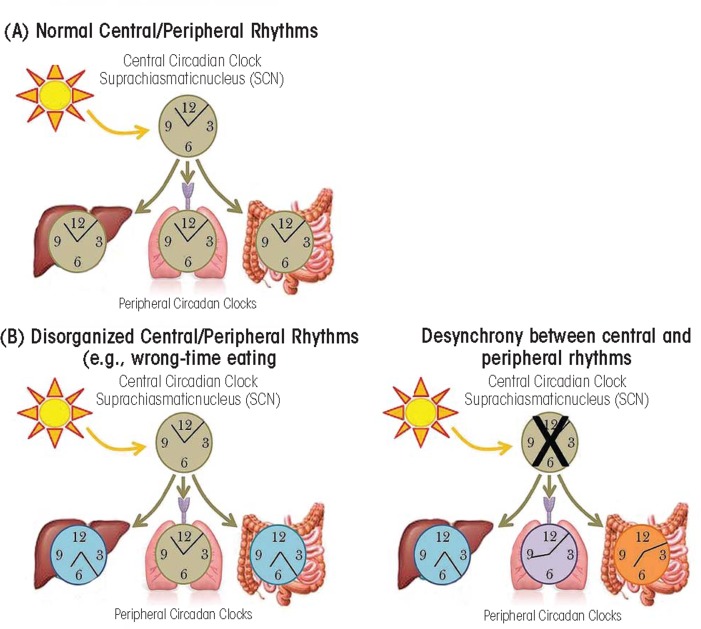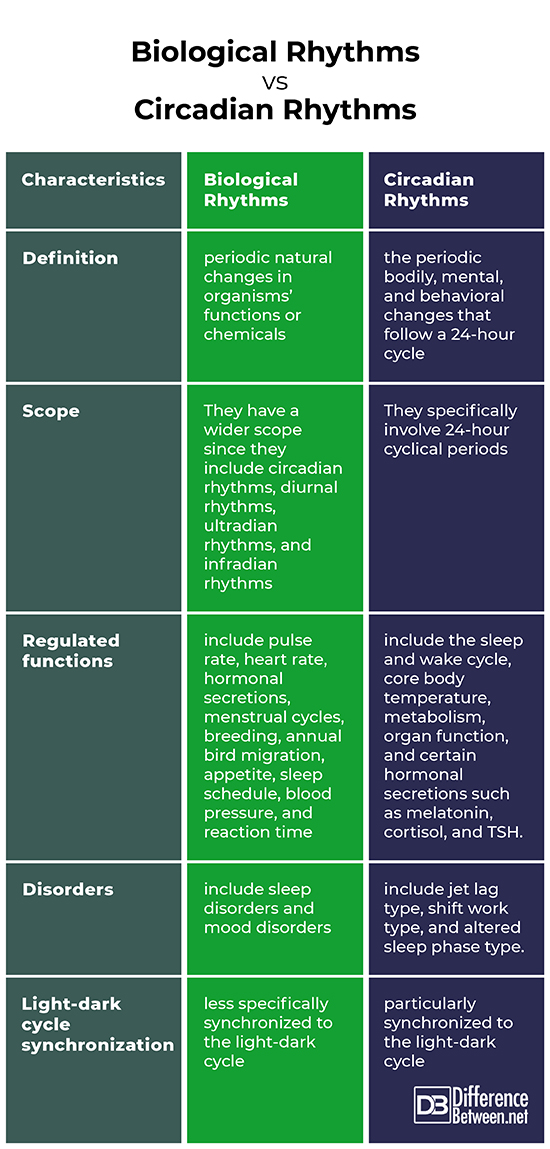Difference Between Biological Rhythms and Circadian Rhythms
Some people may think biological and circadian rhythms are the same as they both refer to bodily periodic fluctuations which impact physical, mental, and behavioral functions. They are also affected by environmental triggers such as light and temperature. Moreover, these rhythms are facilitated by the brain part, hypothalamus. These mechanisms are studied by chronobiologists, experts who study living organisms’ cyclic phenomena and their adjustments in relation to time.
However, these episodic changes have their distinctions. Biological rhythms refer to periodic natural changes in the body’s functions or chemicals. In comparison, the cyclical natural fluctuations of circadian rhythms specifically follow a 24-hour cycle. The following discussions further look into their differences.

What are Biological Rhythms?
Biological rhythms are periodic natural changes in your body’s functions or chemicals. The involved mechanism is compared to a “master clock” which manages the other internal clocks such as sleep schedule, body temperature, blood pressure, body temperature, and reaction time. This mechanism may be influenced by external factors such as drugs and sunlight (Gabbey & Nall, 2016).
The following are the four biological rhythms:
- Circadian Rhythm
Circadian rhythms are periodic changes that follow a 24-hour cycle. They are generally influenced by the amount of light in the environment. For instance, you tend to feel sleepier in the dark as compared to when you are being exposed to bright light.
- Diurnal Rhythm
Diurnal rhythms are synchronized with the day and night cycle. This biological rhythm may or may not be a circadian rhythm. It is considered diurnal if the rhythm’s endogenous nature is verified (Vitaterna, Takahashi, & Turek, 2001).
- Ultradian Rhythm
Ultradian rhythms are cycles repeated throughout the day. The examples include pulse rate, heart rate, hormonal secretions, appetite, and blood circulation.
- Infradian Rhythm
Infradian rhythms are longer than circadian rhythms since they last for more than 24 hours. The examples include menstrual cycles, breeding, tidal cycles, seasonal depression, and other seasonal rhythms.

What are Circadian Rhythms?
Circadian rhythms (the most well-known biological rhythm) are periodic bodily, mental, and behavioral changes that follow a 24-hour cycle. Like diurnal rhythms, they are particularly synchronized to the light-dark cycle since these mechanisms allow organisms to adjust to periodic changes which are caused by the Earth’s daily rotation on its axis (Society for Research on Biological Rhythms, 2020). These periodic changes include the sleep and wake cycle, core body temperature, and certain hormonal secretions such as melatonin, cortisol, and thyroid-stimulating hormone (TSH). Your circadian rhythm may change as you age and it works best by having regular sleeping habits. As you have already experienced, you feel groggy due to jet lag or when you had to stay up way later than your usual bedtime (National Institute of General Medical Sciences, 2020).
Cyclical fluctuations of melatonin, a hormone produced by the pineal gland, are vital in the circadian rhythm’s functioning. For instance, the body produces more melatonin in response to darkness. This is the reason why it is easier for most people to fall asleep if the lights are dimmed and vice versa. Circadian rhythm disorders include jet lag type, shift work type, and altered sleep phase type. Patients who suffer from circadian rhythm disorders often misuse psychoactive drugs such as stimulants, hypnotics, and alcohol (Schwab, 2018).
Difference between Biological Rhythms and Circadian Rhythms
Definition
Biological rhythms are periodic natural changes in the body’s functions or chemicals. In comparison, circadian rhythms are periodic bodily, mental, and behavioral changes that follow a 24-hour cycle.
Scope
Biological rhythms have a wider scope as they include circadian rhythms, diurnal rhythms, ultradian rhythms, and infradian rhythms. It is compared to a “master clock” which manages the other internal clocks. On the other hand, circadian rhythms, the most well-known biological rhythm, specifically involve 24-hour cyclical periods.
Regulated Functions
The functions involving biological rhythms include pulse rate, heart rate, hormonal secretions, menstrual cycles, breeding, annual bird migration, appetite, sleep schedule, blood pressure, and reaction time. As for circadian rhythms, the regulated functions include the sleep and wake cycle, core body temperature, metabolism, organ function, and certain hormonal secretions such as melatonin, cortisol, and TSH.
Disorders
The disorders involving biological rhythms include sleep disorders and mood disorders. On the other hand, circadian rhythm disorders include jet lag type, shift work type, and altered sleep phase type.
Light-Dark Cycle
Circadian rhythms are particularly synchronized to the light-dark cycle since these mechanisms allow organisms to adjust to periodic changes which are caused by the Earth’s daily rotation on its axis. Since biological rhythms include circadian rhythms, they are also affected by the light-dark cycle. However, circadian rhythms are specifically more closely associated to the lengths of day and night.
Biological Rhythms vs Circadian Rhythms

Summary
- Some people may think biological and circadian rhythms are the same as they both refer to bodily periodic fluctuations which impact physical, mental, and behavioral functions; however, they have distinctions.
- Biological rhythms include circadian, diurnal, ultradian, and infradian rhythms.
- Circadian rhythms are changes which follow a 24-hour cycle and are particularly synchronized to the light-dark cycle.
- As compared to circadian rhythms, biological rhythms have a wider scope; hence, they regulate more functions.
- The disorders involving biological rhythms include sleep and mood disorders while circadian rhythm disorders include jet lag type, shift work type, and altered sleep phase type.
- Difference Between Hematoma and Melanoma - February 9, 2023
- Difference Between Bruising and Necrosis - February 8, 2023
- Difference Between Brain Hematoma and Brain Hemorrhage - February 8, 2023
Search DifferenceBetween.net :
Leave a Response
References :
[0]Gabbey, Erickson and Nall, Rachel. “What are Biological Rhythms?” Healthline, 4 November2016, https://www.healthline.com/health/biological-rhythms
[1]Gabbey, Erickson and Nall, Rachel. “What are Biological Rhythms?” Healthline, 4 November2016, https://www.healthline.com/health/biological-rhythms
[2]National Institute of General Medical Sciences. “Circadian Rhythms”. 2020, https://www.nigms.nih.gov/education/fact-sheets/Pages/circadian-rhythms.aspx
[3]Schwab, Richard. “Circadian Rhythm Sleep Disorders”. MSD Manual, December 2018, https://www.msdmanuals.com/professional/neurologic-disorders/sleep-and-wakefulness-disorders/circadian-rhythm-sleep-disorders
[4]Society for Research on Biological Rhythms. “What are Biological Rhythms?”. 2020, https://srbr.org/about-chronobiology/what-are-biological-rhythms/
[5]Vitaterna MH, Takahashi JS, and Turek FW. "Overview of Circadian Rhythms". Alcohol Research & Health, 2001, 25 (2): 85–93. PMC 6707128
[6]Image credit: https://commons.wikimedia.org/wiki/File:Biological_clock_human.svg
[7]Image credit: https://commons.wikimedia.org/wiki/File:Central_and_peripheral_circadian_rhythms.jpg
